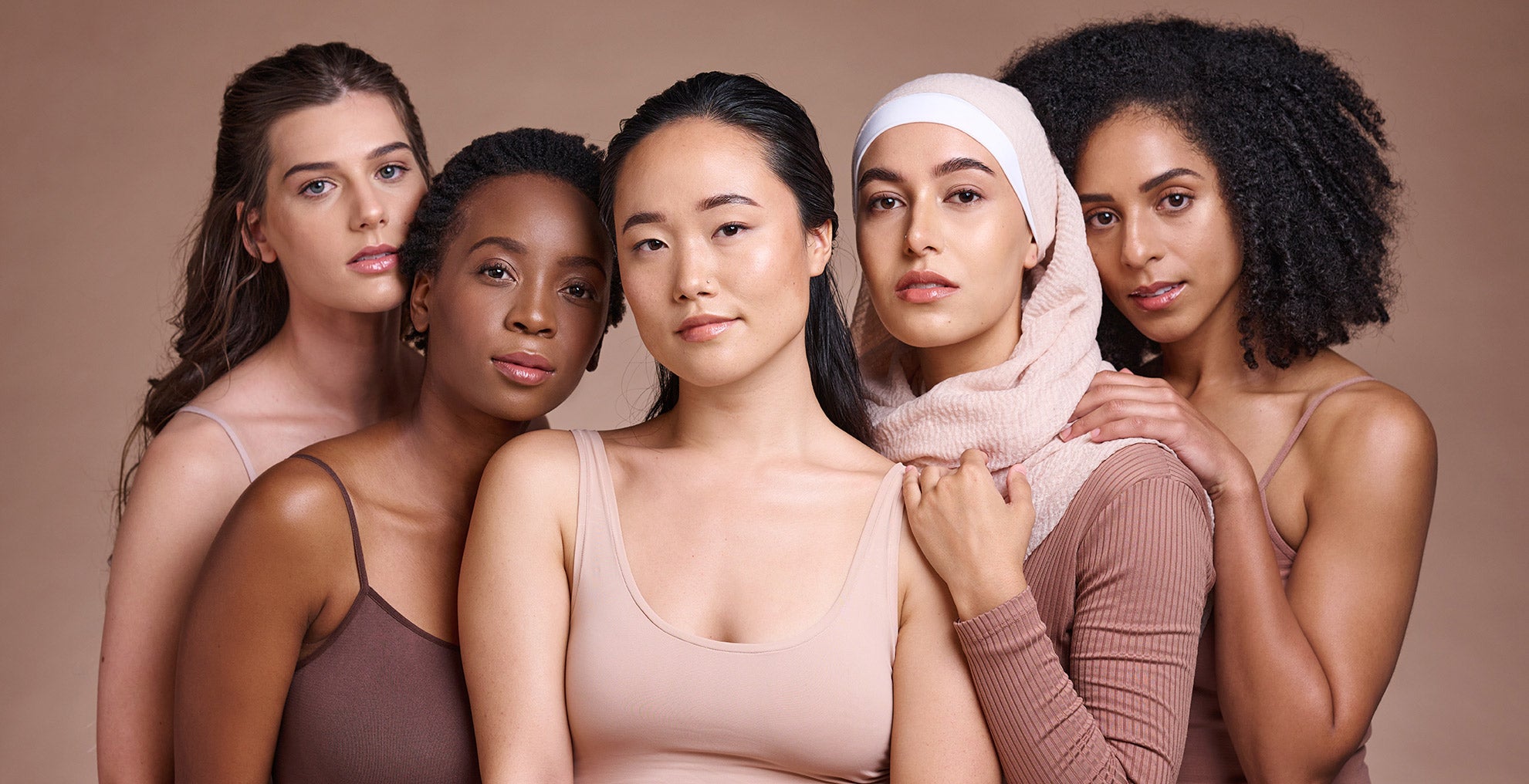“People of color” has made its way into our common vernacular, but what does the term really mean?
Assigning attributes to particular groups comes with a long history of profiling. Unfortunately, the common practice of defining people of color as “non-white” is an oversimplification that promotes the harmful act of identifying people by lacking whiteness. In reality, people of color can be considered as possessing more – from a scientific standpoint.
On The Skin Report podcast, Dr. Simran Sethi, an Internal Medicine doctor and the Founder and Medical Director of RenewMD medical spas, discusses how people of color possess more melanin, which plays a beneficial role in protecting our skin. The episode kicks off our September Series on melanated skin by covering melanin production and how it’s impacted by our genes and environments.
Science and Skin Tones
People of color with more pigmented skin tones possess more melanin, which is vital for protecting our skin health. Using “people of color” to identify those with more pigmented skin encourages a stronger appreciation for these skin characteristics. In addition, understanding the science behind melanin in the skin can also help us to positively reframe our mindsets regarding this beneficial trait.
Thanks to evolution, each of our ancestors developed different characteristics to help them survive against the elements of their environments, like UV rays. Through time we have retained these protective physical features, which explains why we see such a wide range of skin tones in people today.
People of color generally have “darker” skin tones with a greater presence of melanin, often due to their lineage originating from areas with sunnier climates. This more significant presence of melanin not only contributes to their skin’s beautiful shades, but the science behind melanin helps to protect the skin from the elements and the effects of aging.
Skin’s reaction to insults can result in a large variety of pigmentation. The skin comprises three layers, including the epidermis as the outermost layer, the dermis, and the hypodermis, the deepest layer. Throughout history, human being’s skin has evolved as an interconnected network to protect us from pathogens, and chemical and physical threats, including the sun’s harmful UV rays.
When our skin is exposed to UV rays, our melanocytes produce melanin, which absorbs and filters the rays from entering the dermis and damaging the layer of our skin that makes essential proteins. Therefore, the more pigmentation in the skin, the more natural protection it has. So while every person –regardless of skin tone – should wear sunscreen, melanin does help to block some of the sun’s UV rays.
Melanin also helps to protect the deeper layers of the skin, mainly the dermis, where we produce the essential cell proteins that give our skin its integrity. This includes collagen protein, which helps give skin its strength, and elastin, which keeps skin tight and firm. For this reason, people with more melanated skin tones have a lesser tendency to develop fine lines and skin sagging, thanks to their protective melanin.
Skincare for Melanated Skin
While melanin is a vital defense mechanism for the skin, the skincare industry has historically encouraged products and practices that work against melanin production. For years, companies promoted products that bleached and lightened the skin. However, skin bleaching products are incredibly unhealthy, ranging from very acidic formulations to high concentrations of pharmaceuticals like hydroquinone.
Instead, Dr. Sethi’s goal is to help her patients learn to respect and embrace their melanin. A helpful approach for caring for our skin’s melanin is “skin cycling,” which focuses on all the steps of our natural skin renewal cycle, ‘calms’ melanocytes, and allows them to produce healthy amounts of melanin. People of color can use the process of skin cycling to work with their melanin, not against it.
Listen to The Skin Report podcast to learn more about skin cycling and healthy skin care practices for people of color.



